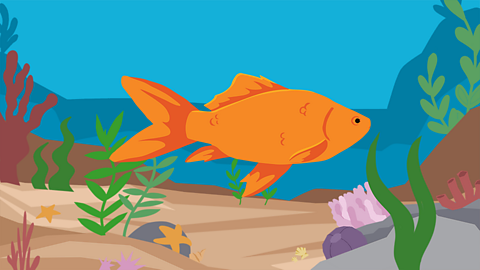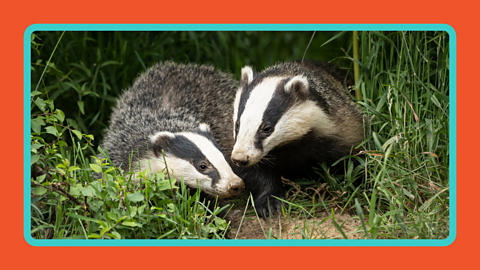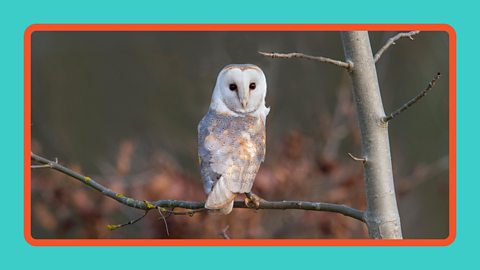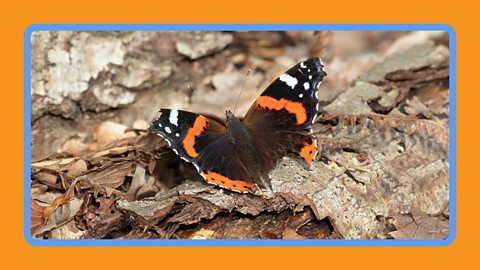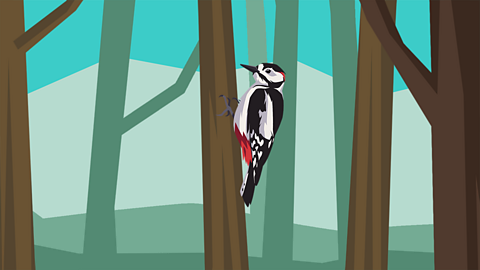
What is a woodland habitat?
A woodland habitat is an area of land that is covered in trees with some spaces between the trees where light can filter through to the floor. Woodland habitats can be very quiet places during the day.
Woodlands are home to some animals that are nocturnal so during the day they are asleep. At night, woodlands can be much noisier places because the nocturnal animals are waking up.

All animals need the same important things to survive water, air, shelter and food and a woodland habitat provides plenty of all of them for all the species that are found there.
Animals don’t choose an environment because they are suited to it.
Animals live in these places and evolution results in adaptations to help them survive.
Did you know?
Woodlands can be found in lots of places across the world that have the right temperate climate – not too hot and not too cold.
Watch: Explore a woodland habitat
Explore a woodland with Cam and Sophie the barn owl from One Zoo Three as they find out what a woodland habitat is, and what animals can be found there.
Cam: Hi I’m Cam and this is a woodland habitat made up of lots of trees and bushes which provide the perfect home for lots of mammals, birds and insects.
Woodlands are found in the countryside and parks.
Many of these tree lose their leaves in winter. They’re called deciduous trees like this oak which can grow for hundreds of years.
Other trees can be evergreen like this pine tree that keeps its pine needs all year round.
Trees provide shelter and homes for many animals like this long-eared owl who hunt in the woods at night.
Squirrels will leap around searching the woodland floor for pine cones and nuts to eat.
Birds build nests on branches or cosy holes in trees which offer a safe place to lay eggs and young chicks to hatch.
Woodpeckers can sometimes be heard pecking a hole in a tree trunk to find food.
Holly and bramble bushes beneath the trees provide shelter and food for smaller mammals like voles.
Woodlands are good for animals and for us too. Trees produce oxygen in the air which we all need to breathe.
So its important to protect the woodlands and plant new trees.
Woodlands with lots of bushes and trees are a great home for many animals and at night they’re a great spot to see owls hunting just like Sophie the barn owl here.
But wait a second, your nocturnal, shouldn’t you be asleep in the day?
Ah, it’s time for you to go to bed!
What are woodland habitats like?

A woodland floor can be quite dark and shaded. This is because the canopy of the trees block out lots of light from the sun. As it is more shaded it can feel cooler and sometimes feel a bit damp.
Some patches, where there are less trees can be brighter and more open.
Woodlands are quiet because they can cover large areas of land so if you walk deep into a woodland you are away from roads, traffic and urban areas.
There are also lots of places for the animals that live in a woodland habitat to hide such as in burrows under the ground, up into the tall trees and under leaves.

What is a woodland habitat?
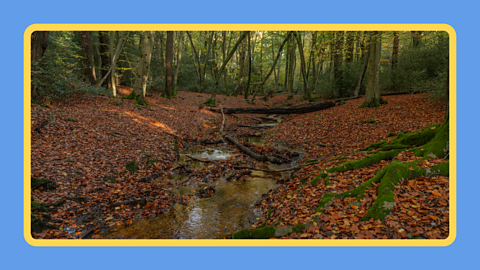
Image caption, Woodlands
A woodland habitat is an area covered in trees and plants, as well as the animals that have adapted to live there.
1 of 6
Woodland animals and plants
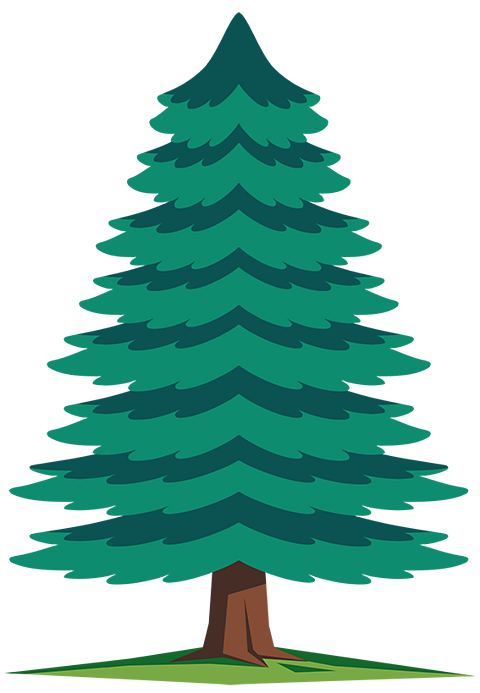
Tremendous facts about woodlands and trees
In the UK there are around 22 species of native trees, and another 60 species which have been introduced over the years.
13% of the UK is covered in woodland habitats. That means that if all the woodland was joined together it would cover almost all of Wales and Northern Ireland.
Oak trees can grow to be very old. Offa's Oak in Berkshire is thought to be over 1300 years old.
Mushrooms and toadstools can often be found growing out of the woodland floor. They are a form of fungus. You may also see fungi growing on the sides of dead or living trees.
Some fungi are poisonous if eaten so you should never touch any fungus that you see growing in a woodland, unless you are an expert.
Foxes are omnivores which means they eat both animals and plants.
The tallest tree in the UK is a Douglas fir growing near Inverness, which is over 66 metres tall.
Owls are nocturnal hunters, which means they feed mainly at night.

Watch: What lives in a woodland habitat?
Have you ever wondered what plants and animals live in woodland habitats?
Explore this woodland habitat and learn about its plants and animals.
Have you ever wondered what plants and animals live in woodland habitats?
Well, pack your walking boots, we're off to the woods!
Ooh. It's very green here. There are so many trees here. Like this oak tree.
They can live for hundreds of years and are home to many animals, birds and insects.
This giant oak tree would have grown from a tiny acorn. Like this one!
Squirrels love to eat acorns. In the autumn, squirrels dig holes and store acorns ready for the winter.
And over there, a badger. Badgers live underground and their houses are called setts. Their stripes look like moonlit shadows, these help them to hide at night.
So, woodland habitats are green and shady. Ooh. I need some sunlight.
Important words
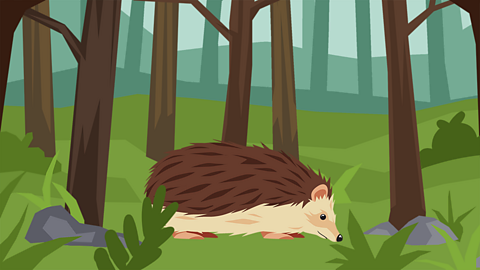
Adaptation – The way animals change to suit different conditions.
Air – All animals need air to breathe.
Evolution – The way animals can develop small differences over time.
Food – The things an animal or plant eats and gets nutrition from.
Fungi – The plural of fungus. A fungus is a living thing, like a mushroom or a toadstool, which is neither a plant nor an animal.
Nocturnal – Animals that sleep during the day and are active at night.
Omnivore – Animals which eat meat and plants. Hedgehogs and foxes are omnivores.
Shelter – Where an animal finds protection from predators.
Water – All animals need to drink or take in water to survive.
Woodland habitat – Where an animal or plant lives in an area dense with trees, shrubs and bushes.

Activities
Activity 1 – Find the woodland animals
Activity 2 – Woodland habitats quiz
Activity 3 – Woodland habitat sorting
Activity 4 – Woodland wordsearch
Easter Holidays Activity Pack activity
Check out some Easter inspired activities to complete in the Easter Holidays, for KS1.

More on Living things and their habitats
Find out more by working through a topic
- count2 of 11
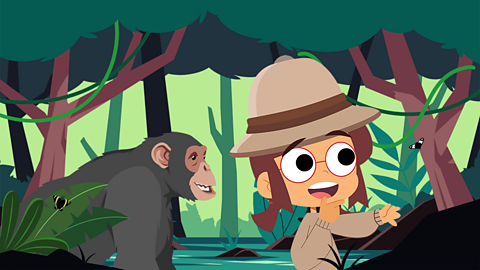
- count3 of 11
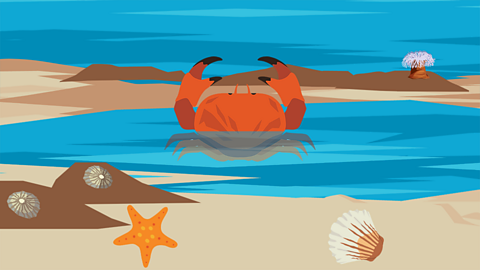
- count4 of 11
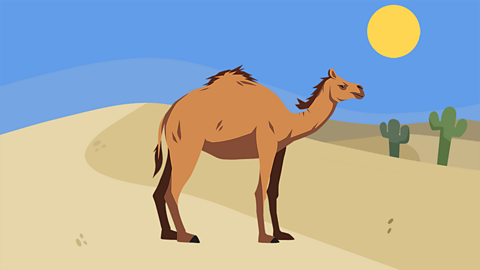
- count5 of 11
